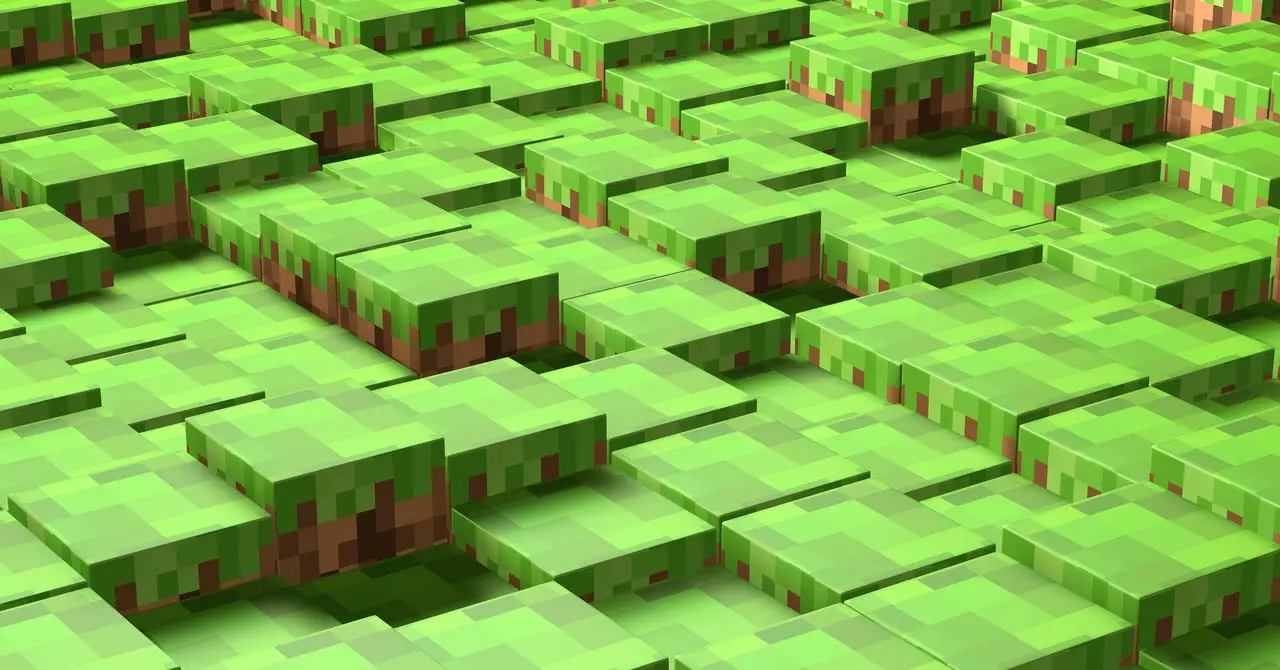In recent years, the gaming industry has witnessed transformative innovations, particularly with the integration of artificial intelligence (AI) into various game mechanics. Among the pioneers of this trend is Oasis, an unconventional game that emerged from a collaboration between Decart, an Israeli AI startup, and Etched, a company specializing in custom silicon. Since its release, Oasis has drawn comparisons to the widely beloved Minecraft, but it introduces a refreshing and bizarre twist that captures the imagination of players seeking an inexplicable experience.
Oasis distinguishes itself by utilizing an AI transformer model that generates its entire environment in real-time, unlike traditional games that rely on pre-designed assets and scripted behaviors. By drawing from an endless array of Minecraft gameplay examples, the AI crafts each frame in response to player actions, resulting in a distinctly dynamic and unstable world. This open-world game offers players an opportunity to not only explore but also provoke change within the environment, making each play session unique.
As players venture into Oasis, they find themselves in a quirky universe filled with unpredictable elements. Structures might twist into peculiar shapes, landscapes morph unexpectedly, and even mundane objects can become bizarre artifacts. For instance, animals may exhibit peculiar deformities, and pathways may lead to nowhere, enhancing the sense of surrealism. The aesthetic mirrors an ever-shifting dreamscape, where reality is as malleable as imagination itself.
The game embodies an almost philosophical quality reminiscent of the film Inception, where players are compelled to engage with an environment that feels paradoxically familiar yet unsettlingly alien. For those who dare to peer closely at individual textures, a temporary disorientation awaits when they look away only to discover a drastically altered scenery upon glancing back. This dynamic engagement forces players to adapt continuously, redefining their understanding of a stable gaming environment.
One of the standout features of Oasis is its user input option, allowing players to upload their images and have the AI transform them into blockish, pixelated landscapes. This further enhances the ludic aspect of the game while blurring the lines between player agency and AI creation. The ability to submit personal photos adds a deeply personal touch, provoking curiosity as players witness their imagery morph into something entirely envisioned by the AI. For instance, when a user uploads a picture of their pet, they may find a breathtaking, albeit non-literal, depiction of their furry companions within the game world.
Despite its allure, the game’s reliance on AI-generated landscapes raises pertinent questions within the gaming community. The unpredictable nature of Oasis has led to a viral sensation among players who relish the absurdity of exploring alien terrains and stumbling upon inexplicably warped environments. As they attempt to manipulate the AI’s outputs—some even seeking to recreate teleports akin to Minecraft’s “The End” dimension—the challenges of coherence become evident.
However tantalizing the venture into Oasis may be, it is not without its critiques. Scholars and industry insiders express skepticism regarding the practical applicability of such an AI-driven framework in mainstream gaming. Julian Togelius, a professor of computer science at New York University, emphasizes the inconsistencies and capriciousness of the current AI technology, referring to it as “an answer in search of a question.” This sentiment reflects a broader concern regarding the sustainability of exploratory gameplay driven by AI, particularly in balancing novelty with a meaningful gaming experience.
Furthermore, game designer Frank Lantz articulates the sentiment that despite the impressive technological feats exhibited by Oasis, the experience resonates in an “uncanny valley,” leaving players yearning for the engaging qualities they expect from traditional gaming. Lantz’s perspective underscores a critical juncture in gaming evolution; while the potential for integrating AI into gaming is palpable, achieving a truly enjoyable experience remains a challenge.
Oasis stands at the crossroads of innovation and creativity, illustrating the inexplicable potential that AI harbors within the gaming realm. While it may evoke mixed sentiments regarding its playability, the game undeniably captivates players through its eccentric landscapes and surreal mechanics. As AI technology continues to develop, the hope remains that future iterations can resolve the challenges posed by Oasis, paving the way toward an enthralling new chapter in the world of interactive entertainment.


Leave a Reply